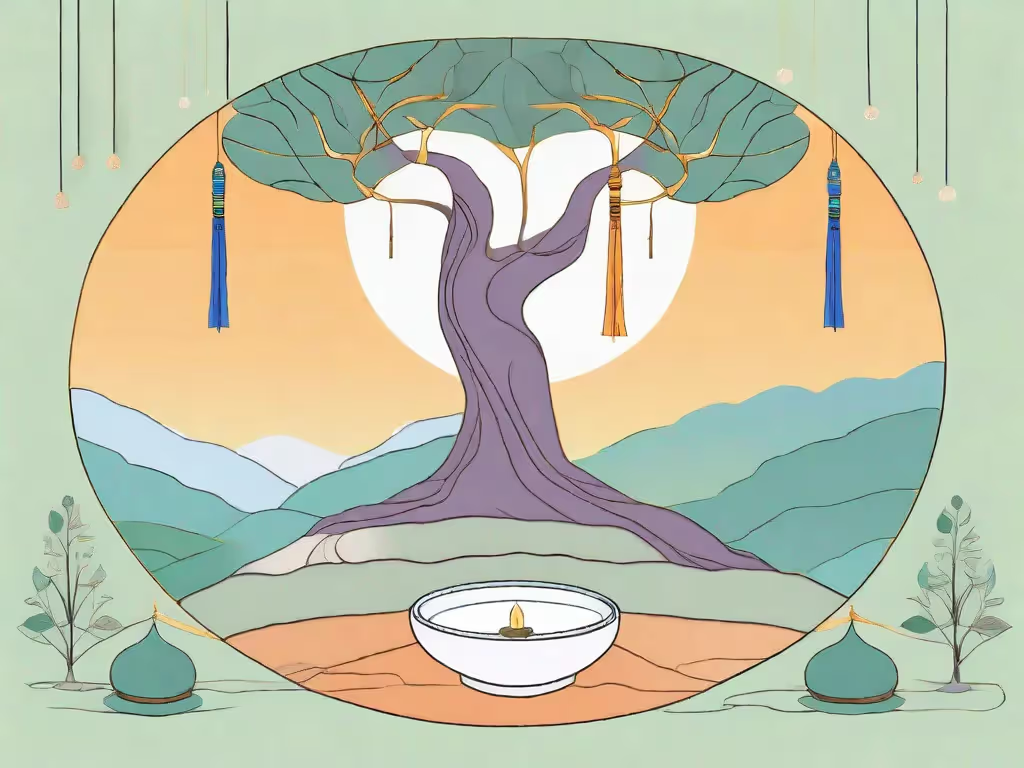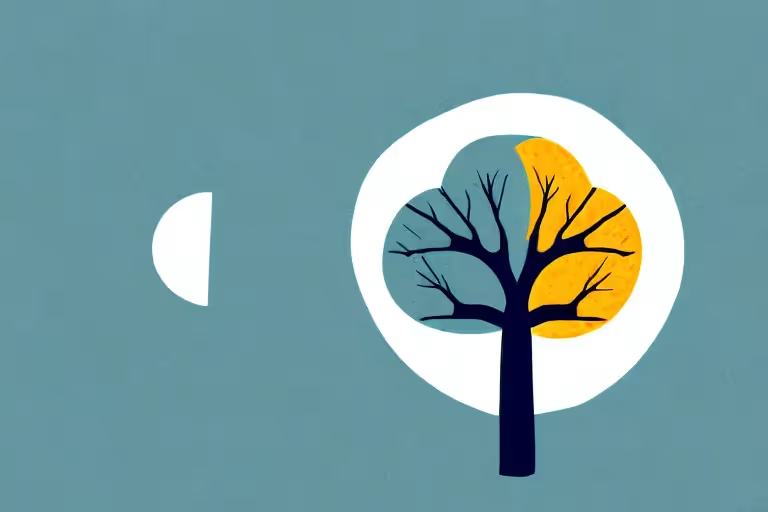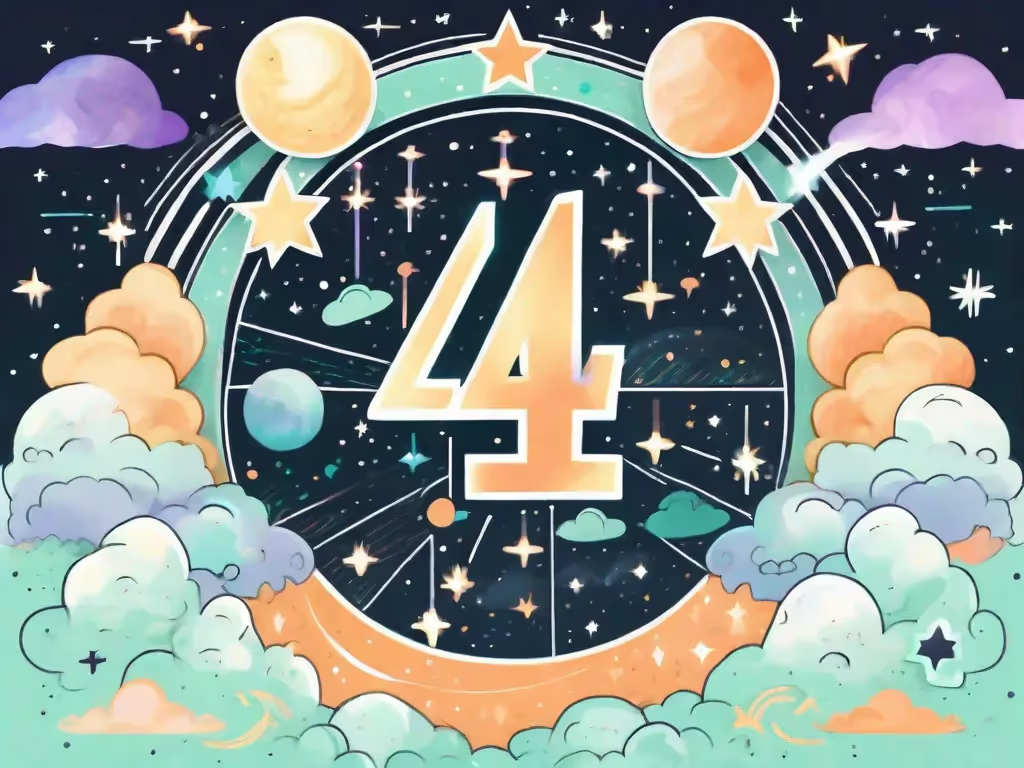Trance and meditation are often mistakenly used interchangeably, but they are distinct practices with unique benefits and characteristics. In order to fully grasp their differences, it is important to understand the basics of each. Let's delve into the world of trance and meditation, unraveling their nuances and shedding light on their individual significance.
Understanding the Basics of Trance and Meditation
Trance and meditation may seem similar at first glance, as both involve altered states of consciousness. Trance, however, is a state characterized by deep relaxation, focused attention, and heightened suggestibility. It is often induced intentionally through techniques like hypnosis or repetitive rituals. In contrast, meditation is a practice of quieting the mind and becoming fully present in the current moment.
Trance, as a concept, has fascinated humans for centuries. From ancient shamanic rituals to modern-day hypnotherapy, the exploration of altered states of consciousness has been a part of human culture. In a trance state, our awareness shifts, allowing us to access deeper levels of consciousness. It is a state in which the mind becomes highly receptive to suggestions and is capable of bypassing the critical faculty that filters incoming information.
Imagine yourself in a trance, where your mind is like a calm lake, reflecting the world around you. In this state, you are open to exploring the depths of your subconscious mind, uncovering hidden beliefs and patterns that may be holding you back. Trance can be utilized for self-exploration, personal transformation, and even therapeutic purposes. Through techniques like guided imagery, affirmations, and visualization, individuals can tap into their inner resources and create positive change in their lives.
On the other hand, meditation takes a different approach. It is a practice aimed at achieving mental clarity, emotional stability, and a deeper connection with oneself and the world around us. Unlike trance, which is characterized by a heightened state of suggestibility, meditation invites us to observe our thoughts and emotions without judgment.
Picture yourself sitting in a serene garden, surrounded by the gentle sounds of nature. As you close your eyes and focus on your breath, you enter a state of meditation. In this state, you become an observer of your own mind, watching thoughts come and go like clouds passing through the sky. Through regular meditation practice, you cultivate a sense of inner calm and gain insights into the workings of your mind.
Both trance and meditation offer unique benefits to those who practice them. Trance allows for deep relaxation and the exploration of the subconscious mind, while meditation promotes mental clarity and emotional well-being. Whether you choose to delve into the depths of trance or find solace in the stillness of meditation, both practices have the potential to enhance your overall well-being and bring about positive change in your life.
Defining Trance: An Overview
Trance involves a shift in our awareness, allowing us to access deeper levels of consciousness. It is a state in which the mind becomes highly receptive to suggestions and is capable of bypassing the critical faculty that filters incoming information. This altered state can be utilized for self-exploration, personal transformation, and even therapeutic purposes.
Throughout history, various cultures have recognized the power of trance and incorporated it into their spiritual and healing practices. From the ecstatic dances of ancient Greece to the trance-inducing drumming rituals of indigenous tribes, the exploration of altered states of consciousness has been a fundamental part of human experience. In modern times, trance is often induced intentionally through techniques like hypnosis, where a trained practitioner guides an individual into a deep state of relaxation and heightened suggestibility.
Once in a trance state, individuals may experience a profound sense of peace and tranquility. Their minds become receptive to suggestions, allowing them to access and reprogram deeply ingrained beliefs and behaviors. This can be particularly beneficial for those seeking personal growth or looking to overcome challenges such as fears, phobias, or addictions. Trance can also be utilized in therapeutic settings, where it has been shown to aid in the treatment of various mental and physical health conditions.
Defining Meditation: An Overview
Unlike trance, which is characterized by a heightened state of suggestibility, meditation is a practice aimed at achieving mental clarity, emotional stability, and a deeper connection with oneself and the world around us. By observing our thoughts and emotions without judgment, we cultivate a sense of inner calm and gain insights into the workings of our minds.
The origins of meditation can be traced back thousands of years to ancient Eastern traditions such as Buddhism and Hinduism. These practices were developed as a means of attaining spiritual enlightenment and transcending the limitations of the ego. Today, meditation has become a popular practice worldwide, with people from all walks of life embracing its numerous benefits.
During meditation, individuals often adopt a specific posture, such as sitting cross-legged or lying down, to promote physical comfort and relaxation. They focus their attention on a chosen object of meditation, such as the breath, a mantra, or a visual image. As thoughts arise, practitioners gently redirect their attention back to the chosen object, cultivating a state of focused awareness.
Through regular meditation practice, individuals can experience a wide range of benefits. Research has shown that meditation can reduce stress, improve concentration, enhance emotional well-being, and promote a sense of inner peace. It has also been associated with changes in the brain, including increased gray matter density in areas related to attention, memory, and emotional regulation.
Ultimately, both trance and meditation offer valuable tools for self-exploration and personal growth. Whether you choose to explore the depths of your subconscious mind in trance or find solace in the stillness of meditation, these practices have the potential to enhance your overall well-being and bring about positive change in your life.
The Psychological Perspectives of Trance and Meditation
When it comes to understanding the psychological processes in trance and meditation, there are intriguing differences to explore.
The Cognitive Processes in Trance
Trance involves a shift in attention and cognitive processing. As our mind enters this altered state, we become more susceptible to suggestions and open to exploring the subconscious mind. This can be a powerful tool for personal growth and therapeutic work, as it allows us to access and release deeply rooted beliefs and emotions.
The Cognitive Processes in Meditation
Meditation, on the other hand, involves a different set of cognitive processes. By training our attention to focus on the present moment, we develop the ability to observe and detach from our thoughts and emotions. This enhances our self-awareness and helps break free from habitual patterns of thinking and behavior.
The Physiological Differences Between Trance and Meditation
Apart from the psychological perspectives, there are notable physiological variances between trance and meditation.
The Brain in Trance: What Happens?
During trance, the brain undergoes changes in neural activity. Research suggests that brain waves shift into the alpha or theta frequency range, associated with heightened relaxation and increased receptivity to suggestions.
The Brain in Meditation: What Happens?
In contrast, meditation has been found to activate regions of the brain associated with attention, self-awareness, and emotional regulation. Studies have shown increased activity in the prefrontal cortex, which is involved in decision-making and impulse control.
The Spiritual Aspects of Trance and Meditation
Beyond the psychological and physiological distinctions, trance and meditation also have spiritual dimensions that are worth exploring.
Trance in Various Spiritual Practices
Throughout history and across cultures, trance has served as a vehicle for spiritual experiences. Shamans, for example, enter trance to communicate with spirits or access realms beyond ordinary consciousness. Trance can also be found in various religious rituals and ceremonies.
Meditation in Various Spiritual Practices
Similarly, meditation has deep roots in spirituality. It is a core practice in many Eastern philosophies and religions, such as Buddhism and Hinduism. The aim of meditation in these traditions is often to attain enlightenment, cultivate compassion, and transcend the limitations of the ego.
Practical Applications of Trance and Meditation
Both trance and meditation have practical applications in our daily lives.
Using Trance for Personal Development
Trance can be utilized as a tool for personal development and self-improvement. By accessing the subconscious mind, we can identify limiting beliefs, heal past traumas, and implement positive changes. This is where techniques like hypnotherapy and guided imagery can have a profound impact.
Using Meditation for Personal Development
On the other hand, meditation offers a path to personal growth and self-discovery. Through regular practice, we learn to be more present, compassionate, and resilient. The benefits extend beyond the meditation cushion, positively influencing our relationships, work-life balance, and overall well-being.
Each of these practices, trance and meditation, have their unique merits and can greatly enhance our lives when incorporated into our daily routines. On the Aura Health App, you can explore guided meditations and hypnotherapy sessions that can help you unlock the transformative power of trance and meditation, unlocking your true potential.
Aura is Your All In One App for Meditation, Mindfulness Wellbeing
Find peace every day with one app for your whole well-being. There is no one-size-fits-all solution to mental well-being. Aura is the first all-in-one wellness app that learns how to best help you. Discover an endless library of expert-created tracks for your well-being, all taught by the world’s best coaches, therapists, and storytellers. With Aura's personalized recommendations, you can find peace every morning, day and night.



.webp)






.avif)

%20(1).avif)


.avif)
.avif)
.webp)


.avif)


















































































































.avif)

















.svg)









